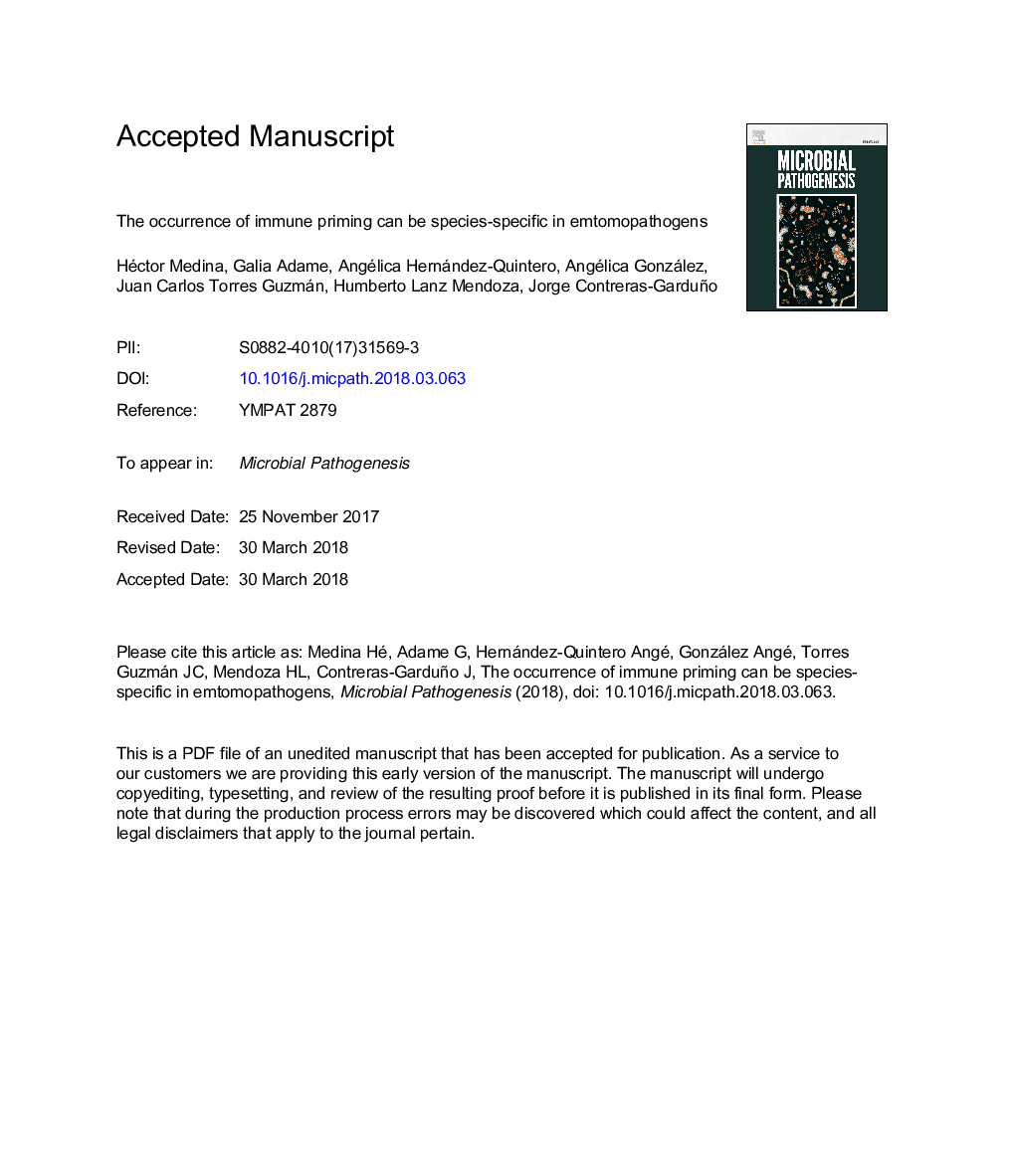| Article ID | Journal | Published Year | Pages | File Type |
|---|---|---|---|---|
| 8749601 | Microbial Pathogenesis | 2018 | 19 Pages |
Abstract
Immune priming in invertebrates refers to an improved immune response (and therefore a better chance of survival) upon a second encounter with a specific pathogen. Although the existence of immune priming has been evaluated in invertebrate hosts, the ability of a particular entomopathogen species or strain to influence the occurrence of immune priming has not been thoroughly evaluated. The aim of the current study was to compare the occurrence of immune priming in Tenebrio molitor larvae after homologous challenges (a dual exposure to similar entomopathogens) with Serratia marcescens, Bacillus thuringiensis and Metarhizium anisopliae. Larvae presented more effective immune priming (measured as survival rates) when exposed to M. anisopliae or B. thuringiensis than when exposed to S. marcescens. We hypothesize that the toll pathway may help T. molitor survive these enemies and that the IMD pathway may be expressed to a lesser degree in this species, which may explain why they succumb to Gram-negative bacteria. This and other recent evidence suggest that the occurrence of immune priming in these organisms must not be ruled out until this phenomenon is tested with different entomopathogens.
Related Topics
Life Sciences
Immunology and Microbiology
Microbiology
Authors
Héctor Medina Gomez, Galia Adame Rivas, Angélica Hernández-Quintero, Angélica González Hernández, Juan Carlos Torres Guzmán, Humberto Lanz Mendoza, Jorge Contreras-Garduño,
